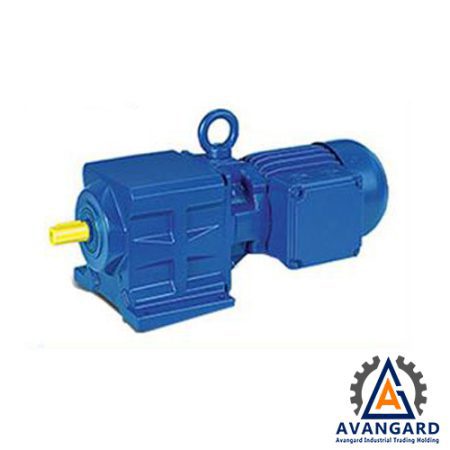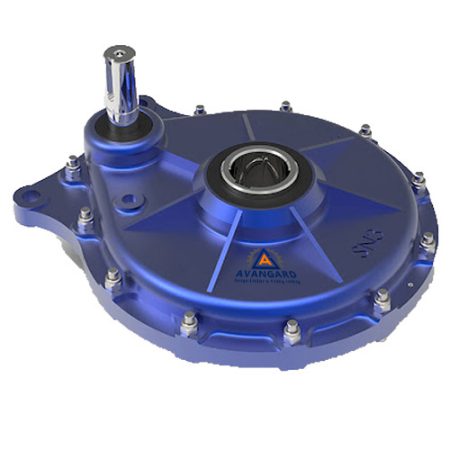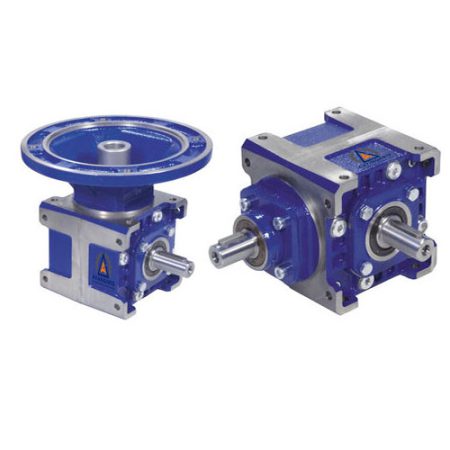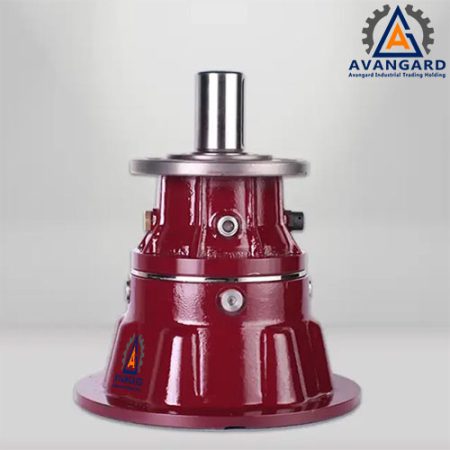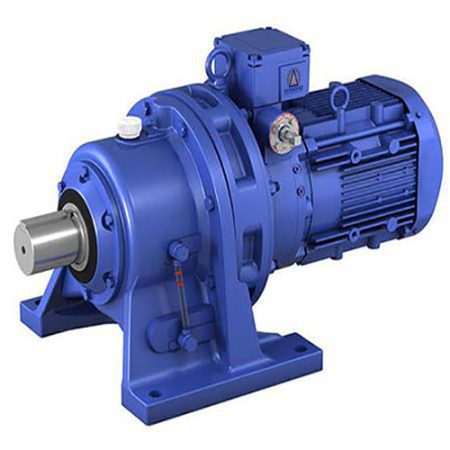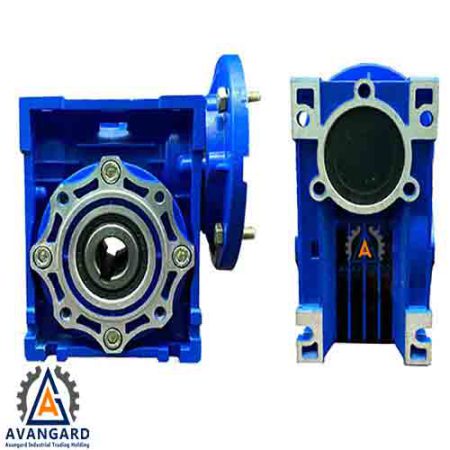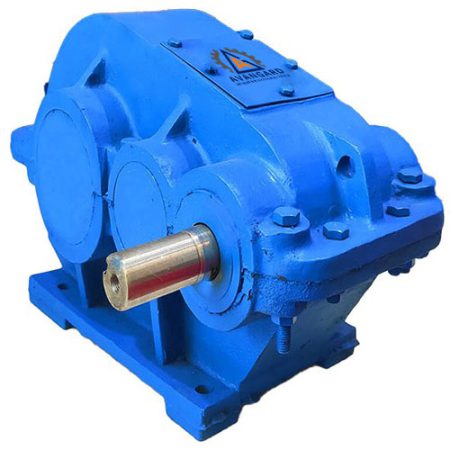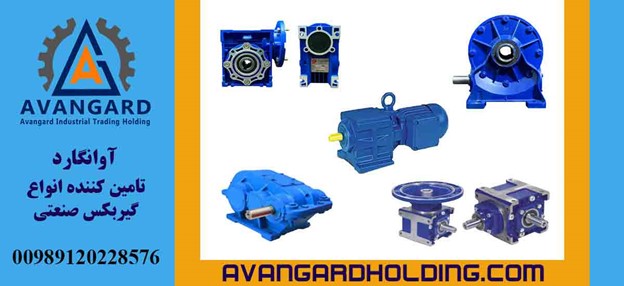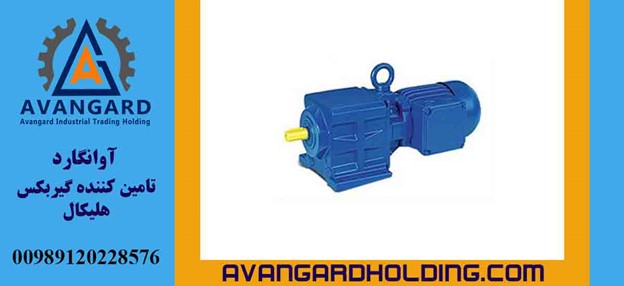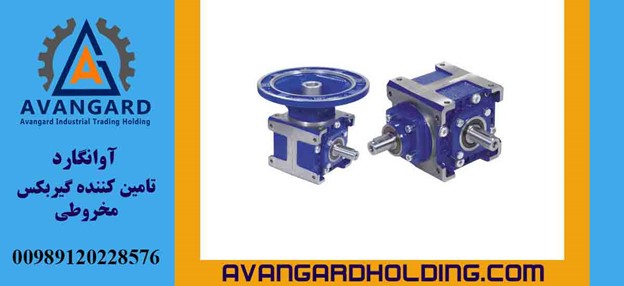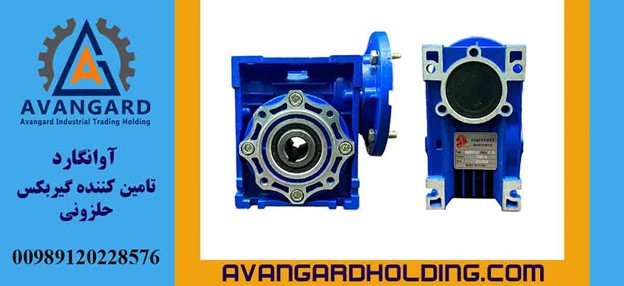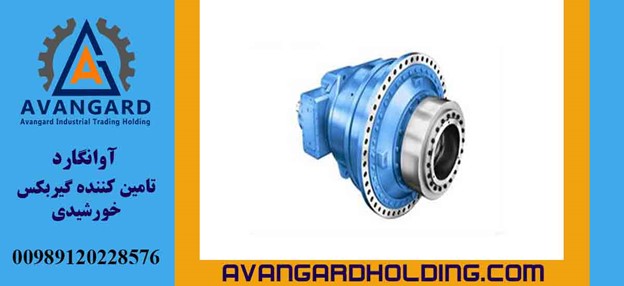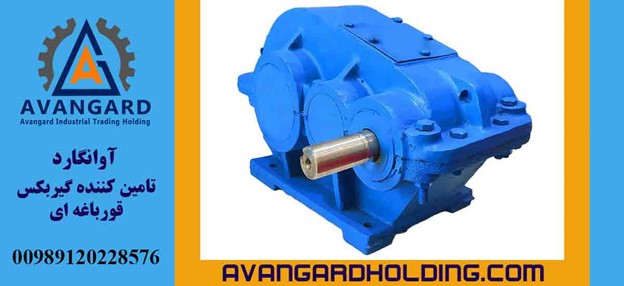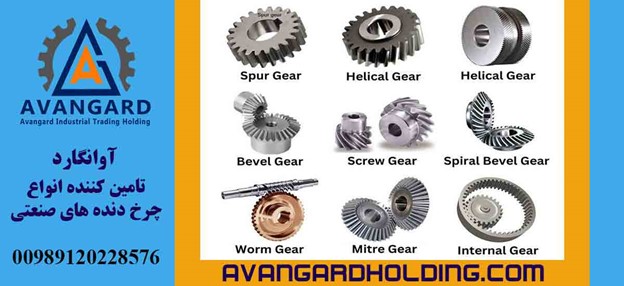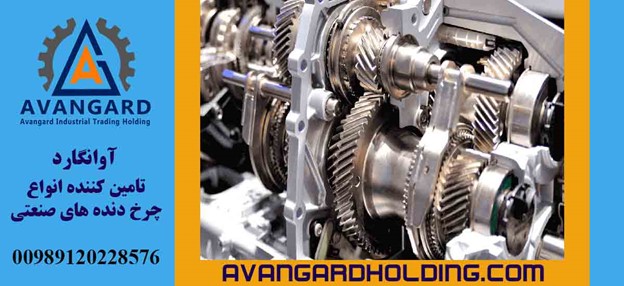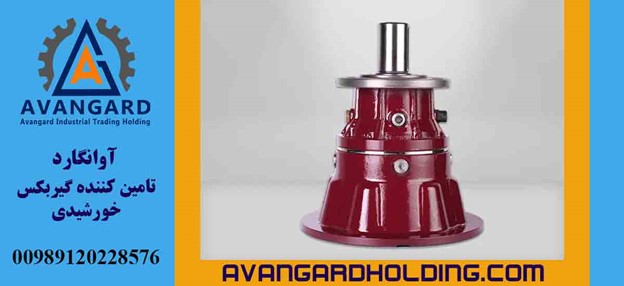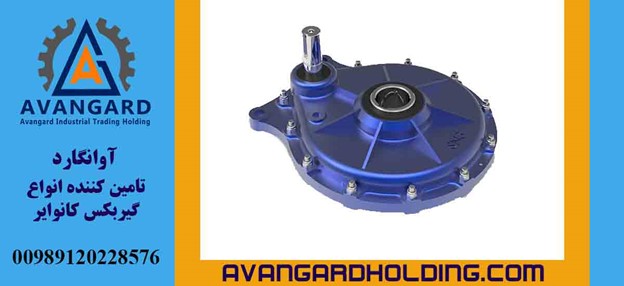Industrial gearboxes are mechanical devices that are an integral part of machinery in various industries. These devices consist of an enclosed housing with a set of gears and shafts that transmit power between different components of a system. Gearboxes are used in the mining industry and are one of the most important spare parts for crushers.
If you are not yet familiar with the concept of an industrial gearbox, it can be simply said that this device helps to transfer mechanical energy from one device to another. Its function is similar to that of automobile gearboxes; industrial gearboxes are usually placed between the motor and the shaft that drives the equipment to adjust the speed, direction, and torque.
Similarly, in cars, the gearbox or industrial gearbox is responsible for transmitting power from the engine to the wheels. The power transmission system in a car includes three parts: the clutch, the differential, and the gearbox, where our focus here is on the gearbox.
In other words, the torque produced by the engine is controlled by the gearbox. The engine generates torque and transfers it to the gearbox. The gearbox also transfers the required amount of this power to the wheels, and thus, the car starts, continues, or its speed decreases.
Given these explanations, it is clear that gearboxes, including industrial gearboxes, are capable of increasing or decreasing the engine's torque. Therefore, the basic concept that the gearbox transmits mechanical energy from one device to another has been fully clarified.
Industrial gearboxes can increase or decrease speed, adjust torque, and change the direction of rotation. This function is similar to car gears that increase or decrease speed and allow for backward movement.
In this way, the gearbox transmits the engine's power to the wheels and can also change the direction of rotation. As mentioned, industrial gearboxes are used in various industries, which we will discuss in detail below.
To choose and purchase a suitable gearbox, several key factors must be considered to ensure that your choice best meets your needs. First, the technical specifications of the gearbox, including power, torque, and speed, must match the operational requirements of your device or system. Also, the type of gearbox (reducer, increaser, planetary, etc.) must be consistent with the working conditions and your specific application. Other important factors include the quality of construction and the materials used in the gearbox, which affect its durability and performance. In addition, accuracy in measuring dimensions and compatibility with the installation space is also important. Checking the brand and getting advice from expert professionals can help you choose a gearbox with quality and suitable for your specific needs and ensure its optimal performance over time. Our experienced experts at Avangard Holding are ready to provide technical advice to you.
Types of Industrial Gearboxes:
Helical Gearbox:
Helical gearboxes, also known as straight shaft gearboxes, are a type of reduction gearbox used to reduce speed and increase torque in various industries. These gearboxes are designed with unique teeth that are at a specific angle to the gearbox shaft; this design leads to greater tooth contact and, as a result, smoother and quieter operation. Due to their high resistance to stress and pressure, helical gearboxes are very suitable for heavy-duty applications and diverse industries. Some models, such as Russian gearboxes and gearboxes with a parallel shaft design, offer high power and torque and are also known as frog and PM types in the market. Reputable brands such as TS, Tabiran, Pars Gorji, AMG, and Siti produce this type of gearbox, and their high quality plays an important role in industrial choices. Of course, it should be noted that helical gearboxes usually require more space for installation, but in return, their optimal and quiet performance is especially noticeable in heavy industrial environments.
Bevel Gearbox:
Bevel gearboxes, also known as bevel or bevel-bevel gearboxes, have conical-shaped teeth that allow them to transmit mechanical force by changing the angle of the shaft. This type of gearbox is especially suitable for changing the direction of movement because it can transmit force from an input shaft to an output shaft that is at a different angle. The advantages of bevel gearboxes include smooth and quiet transmission, the ability to withstand heavy loads, and reduced installation space. These gearboxes are widely used in various industries such as automotive, industrial machinery, and heavy equipment, where there is a need to change the direction of movement and adjust the torque. Due to their special design and high efficiency, bevel gearboxes are known as a desirable option for applications requiring change of direction and power transmission at different angles.
Worm Gearbox:
Worm gearboxes, also known as cubic or book gearboxes, are categorized as reduction gearboxes due to their simple design and effective performance. These gearboxes consist of a worm gear and a worm that are at a 90-degree angle to each other. This design allows them to effectively reduce speed and increase torque, with the feature that the worm gear acts as a brake for the worm. One of the outstanding advantages of worm gearboxes is their self-locking property, which makes these devices resistant to back pressure. Also, due to their small size and optimal performance, these gearboxes are very suitable for limited spaces and for applications requiring high torque. However, it should be noted that worm gearboxes are not able to withstand very high pressures. The wide applications of these gearboxes include elevators, escalators, security gates, conveyors, manufacturing and packaging industries, and small industrial equipment. Reputable brands such as Sahand, Shakereen Sanat Sepahan, Behkar, TS, Tavankar, Toranj, and KS are among the well-known manufacturers of this type of gearbox.
Planetary Gearbox:
Planetary gearboxes, also known as solar gearboxes, are distinguished among industrial gearboxes due to their special design and high efficiency. These gearboxes consist of three main parts: a sun gear in the center, two or more planetary idler gears (pinions) that rotate around the sun gear, and a ring gear that acts as a rail and surrounds all parts. This design causes the torque to gradually increase in several stages, which results in the production of very high torque and excellent efficiency in relatively small dimensions. The main advantages of planetary gearboxes include high efficiency with a return rate of up to 95%, low backlash, and longer lifespan compared to other types of gearboxes. For this reason, these gearboxes are widely used in various industries such as cement, packaging, steel, industrial shredders, wind turbines, and conveyor belts. Reputable brands such as Shahbaz, Pishro Sepahan Gearbox, Reggiana, Bonfiglioli, ZD, and Flender are among the top manufacturers of this type of gearbox.
Frog Gearbox
The frog gearbox is a type of manual gearbox used in older cars and some heavy vehicles. This gearbox is known by this name because of the special shape and placement of the gear lever compared to ordinary gearboxes. The frog gearbox allows the driver to change gears manually and with more precise control over the transmission of power from the engine to the wheels. This type of gearbox usually has a long life and high strength and is suitable for vehicles that require more precision and control in gear changing.
Main Components of an Industrial Gearbox
Industrial gearboxes, which are the heart of many mechanical systems and machinery, consist of various components, each of which plays a vital role in the overall performance of the device. Here, we examine the main components of an industrial gearbox:
Gears (Helical, Bevel, Worm)
Gears, which act as key elements in industrial gearboxes, come in various types, including helical, bevel, and worm gears. Helical gears, with their inclined design and spiral teeth, provide smooth and quiet power transmission. Bevel gears, due to their conical shape, enable the change of direction of motion at 90-degree angles. On the other hand, worm gears, with their unique design, help to reduce speed and increase torque and have the ability to self-lock, which is useful for specific applications.
Shafts
Shafts, which act as power transmission axes, are responsible for transferring power from the gears to other parts of the gearbox. Shafts must be made of strong and high-precision materials to be able to withstand heavy loads and stresses and ensure the gearbox operates optimally.
Bearings
Bearings, which act as supports for shafts, play a vital role in reducing friction and preventing wear at contact points. These components help to stabilize the shafts and reduce vibration and noise, which in turn increases the service life of the gearbox.
Gearbox Housing
The gearbox housing, which acts as the frame or body of the gearbox, plays an important role in protecting the internal components and keeping them in the correct position. This housing also acts as a source for lubrication and protection against pollution and external damage.
Other Components (depending on the type of gearbox)
Depending on the type of gearbox, there may be additional components. For example, some gearboxes have lubrication and cooling systems to maintain temperature and optimal performance. Also, torque and speed control and measurement systems may be specifically installed in advanced and industrial gearboxes.
Each of these components works together to ensure the industrial gearbox performs its function effectively and optimally and improves the performance of mechanical systems and machinery.
Principles of Gearbox Operation
Gearboxes, as key components in mechanical systems and machinery, are responsible for transmitting and adjusting power and torque. Here, we discuss the basic principles of gearbox operation and their function:
Power and Torque Transmission
Gearboxes transfer the power generated by the motor to other parts of the system by means of various gears. This power transmission is done using the interaction between the gears, in which mechanical force is transferred from one shaft to another. In other words, the engine power is converted into motion by the gears and transferred to the output shaft to carry out the desired operation.
Changing Speed and Torque
One of the main functions of gearboxes is to change speed and torque. By changing the ratio of the teeth and the size of the gears, the gearbox can reduce or increase the rotational speed of the shaft while adjusting the torque. This feature allows mechanical systems to have optimal performance in different operating conditions; for example, in cars, gearboxes help adjust the speed and power of the engine to adapt to different road and load conditions.
Transmission Ratio
The transmission ratio in gearboxes indicates the relationship between the input speed and the output speed. This ratio is obtained by dividing the number of teeth of the input gears by the number of teeth of the output gears. The transmission ratio determines how the gearbox changes speed and torque and plays an important role in the performance and efficiency of the system. For example, higher ratios lead to reduced speed and increased torque, while lower ratios lead to increased speed and reduced torque.
Gearbox Efficiency
Gearbox efficiency refers to the efficiency of the gearbox in converting input energy to output energy. This feature depends on various factors, including gear design, manufacturing quality, and lubrication systems. High efficiency means more effective energy conversion and reduced energy loss, which in turn helps to reduce costs and increase the service life of the gearbox. In the design of gearboxes, the effort to achieve high efficiency, reduce friction, and improve manufacturing quality is considered one of the main goals.
In general, gearboxes play an essential role in increasing the efficiency and performance of machinery by adjusting power, speed, and torque and optimizing the performance of mechanical systems.
Applications of Different Types of Gearboxes
Gearboxes are used in various industries and applications due to their special capabilities in changing speed, torque, and direction of motion. In the following, we examine the main applications of different types of gearboxes:
Helical Gearbox
Helical gearboxes, with their spiral tooth design, provide smooth and quiet power transmission and are very suitable for applications that require precision and quiet operation. These gearboxes are particularly used in the textile industry for precise control of the speed and movement of weaving machinery, in the steel industry for power transmission in rolling and production equipment, and in machine tools for precise cutting and forming operations. These capabilities make helical gearboxes an ideal choice for industrial applications with high technical requirements.
Bevel Gearbox
Bevel gearboxes, which are capable of changing the direction of motion to a 90-degree angle, are used in various applications. These gearboxes are used in the automotive industry to transfer power from the engine to the wheels and to change the direction of motion in car gearboxes. They are also used in elevators and cranes to change the direction of movement and transmit power at different angles. The special design and effective performance of bevel gearboxes make them a suitable option for these applications.
Worm Gearbox
Worm gearboxes, with their ability to reduce speed and increase torque, are especially used in the food, packaging, and medical equipment industries. Due to their compact design and high torque production capability, these gearboxes are used in food production and packaging lines for transferring materials and controlling speed. They are also used in medical equipment to precisely adjust movement and reduce speed. These features make worm gearboxes an economical and practical option for industries with limited space and high torque needs.
Planetary Gearbox
Planetary gearboxes, with their complex design and high torque production capability, are used in heavy industries, hybrid vehicles, and robotics. In heavy industries such as cement and steel, planetary gearboxes are used to transmit power under heavy loads and harsh conditions. In hybrid vehicles, these gearboxes are particularly used to improve efficiency and performance in advanced power transmission systems. Also, in robotics for precise control of movement and capability in heavy loads, planetary gearboxes are a suitable choice. The multi-stage design and high capability in changing torque of these gearboxes make them a desirable option for advanced industrial applications.
In general, the choice of a suitable type of gearbox depends on the specific needs of each industry and application, and understanding the different characteristics of gearboxes can help optimize the performance and efficiency of systems.
Choosing the Right Gearbox: A Guide to Optimal Selection
Choosing the right gearbox for a mechanical system or machinery depends on several factors that must be carefully considered to achieve optimal performance and desired efficiency. Here, we examine the factors affecting gearbox selection, methods of calculation and selection, and the importance of consulting with experts:
Factors Affecting Gearbox Selection
- Required Torque: The first and most important factor in choosing a gearbox is determining the required torque. Torque is a measurement of the rotational force that must be transmitted by the gearbox. This amount usually depends on the type of load and operating conditions of the system. Choosing a gearbox with the appropriate torque capacity prevents premature failure and poor performance.
- Speed: The input and output speed of the gearbox must match the needs of the system. Depending on whether you need to increase or decrease speed, you must accurately select the gearbox's transmission ratio. This ratio will greatly affect the overall performance and efficiency of the system.
- Type of Movement: The type of movement required, including linear movement, rotation, or change of direction, also affects the choice of the gearbox. For example, bevel gearboxes are suitable for changing the direction of movement at 90-degree angles, while planetary gearboxes are designed to produce high torque under heavy loads.
- Work Environment: The environmental conditions in which the gearbox will operate, such as temperature, humidity, and the presence of chemicals or dust, must be considered. The gearbox must be able to cope with environmental conditions and have suitable materials and design to have more durability and service life.
Methods of Calculation and Selection of Gearbox
To choose the right gearbox, you must first calculate the exact specifications of the system. This includes calculating the required torque and speed, determining the transmission ratio, and reviewing the type of movement. Online calculation tools and engineering software can help in this process. Also, reviewing the technical data and diagrams of gearbox manufacturers is very important to match the characteristics of the gearbox with the specific needs of the system.
Importance of Consulting with Experts
Consulting with experts in gearbox selection can help you make the right and optimal decisions. Our experienced experts at Avangard Holding can suggest the right gearbox for you based on the specific needs of the system and environmental conditions and explain complex technical points. They can also help you understand technical specifications, choose a reputable brand, and prevent potential problems. Therefore, cooperation with consultants and experts in this field is of particular importance and can help to improve performance and increase the service life of the system.
Ultimately, choosing the right gearbox with attention to the above factors and consulting with experts will guarantee optimal performance and success in the operation of mechanical systems and machinery.
Advantages of Using a Gearbox
Using a gearbox in mechanical systems and machinery brings significant advantages that help improve the performance and efficiency of systems. In the following, we examine the most important advantages of using gearboxes:
Increasing System Efficiency
Gearboxes, by optimizing power transmission and adjusting speed and torque, increase the overall efficiency of mechanical systems. By using appropriate transmission ratios, gearboxes can transmit energy more effectively and help optimize system performance. This improvement in efficiency means more efficient use of resources and increased productivity.
Reducing Energy Consumption
One of the important advantages of gearboxes is reducing energy consumption. By adjusting the speed and torque precisely, gearboxes prevent energy waste and reduce energy consumption. This energy optimization not only reduces operating costs but also helps to conserve energy resources and reduce environmental impacts.
Increase Equipment Lifespan
The use of gearboxes helps reduce load and direct pressure on the motor and other system components, leading to an increased lifespan of the equipment. By evenly distributing the load and reducing wear, gearboxes contribute to decreasing maintenance needs and enhancing overall system durability.
Precise Speed and Torque Control
Gearboxes enable precise speed and torque control in mechanical systems. This precise control allows users to optimize operations and adjust system performance according to specific needs. This feature is especially important in industrial applications and complex machinery requiring precise adjustments.
Noise and Vibration Reduction
Gearboxes, through special designs and effective interaction between gears, help reduce noise and vibrations in systems. This reduction in noise and vibration not only improves working conditions and comfort in industrial environments but also reduces damage and failures caused by vibrations.
Overall, the use of gearboxes improves system efficiency, reduces energy consumption, increases equipment lifespan, provides precise speed and torque control, and reduces noise and vibration. These advantages make gearboxes an essential and effective component in the design and operation of mechanical systems and machinery.
Purchasing Industrial Gearboxes:
When purchasing an industrial gearbox, paying attention to a few key points can help you choose the best option. First, check the brand and quality of the gearbox, as reputable brands usually adhere to higher standards and ensure product quality. Warranty is also crucial, as reliable guarantees assure you that in case of problems, the gearbox can be repaired or replaced. Additionally, comparing gearbox types based on features and quality can help you choose the most economical option. Finally, purchasing from reputable and trusted stores helps ensure you acquire high-quality gearboxes with proper support. Attention to these details assures that the industrial gearbox purchased will meet your specific needs and exhibit optimal performance.
Small Industrial Gearbox:
Small industrial gearboxes, due to their compact design and effective performance, have become key components in modern industries. These gearboxes are particularly used in robotics and medical equipment. In robotics, small gearboxes are used for precise movement control and interaction with complex robot components, aiding high accuracy and smooth device operation. In medical equipment, these gearboxes provide precise and controlled movements for surgical, diagnostic, and therapeutic devices.
The advantages of small industrial gearboxes include their compact size and light weight, allowing them to be used in tight spaces and compact designs without affecting performance and efficiency. Light weight also reduces load on systems and lowers transportation and installation costs. These features make small industrial gearboxes an ideal choice for applications requiring high precision and limited space, thus enhancing the efficiency and overall performance of devices and industrial systems.
Gear Motor:
A gear motor combines a motor and a gearbox to optimize power transmission and provide precise motion control in mechanical systems. The interaction between the motor and the gearbox is crucial, as the motor generates power and the gearbox adjusts it to meet the specific needs of the system. The gear motor operates by transferring power from the motor to the gearbox, which then adjusts speed and torque to achieve the desired movement.
Selecting the right motor for the gearbox is key to optimal system performance. When selecting a motor, consider factors such as required power, speed, and load type. The motor must align well with the gearbox to achieve optimal performance and extended device lifespan. Additionally, ensuring compatibility between the technical specifications of the motor and gearbox, including torque, speed, and transmission ratios, is essential for attaining optimal performance.
In various industries, different types of motors used in combination with gearboxes include motors with different technologies. AC and DC motors, synchronous and asynchronous motors, and servo motors are among the common types. AC electric motors are popular in general and industrial applications due to their simplicity and low cost, while DC motors are used in applications requiring precise speed and torque control. Servo motors are preferred in advanced and complex systems, such as robotics and automation equipment, due to their high precision and quick response.
The proper combination of motor and gearbox can improve system performance, reduce energy consumption, and extend equipment lifespan. Correct selection and alignment between the motor and gearbox are fundamental to achieving optimal performance and high system efficiency.
Conveyor Gearbox:
The conveyor gearbox is a key component in industrial transportation systems, playing a crucial role in power transmission and speed regulation of conveyors. Various types of gearboxes are designed for conveyors, each with its unique features and specific applications.
Types of gearboxes used in conveyors include helical, worm, and bevel gearboxes. Helical gearboxes are suitable for conveyors requiring smooth operation and low noise due to their smooth operation and friction reduction. These gearboxes are typically used in industrial conveyors with medium to heavy loads. Worm gearboxes, also known as cube gearboxes, are ideal for conveyors in tight spaces and requiring increased useful torque due to their compact design and high torque capability. Additionally, bevel gearboxes are commonly used for changing the direction of movement in complex conveyor systems requiring angular adjustments.
Choosing the right gearbox for a conveyor depends on several key factors. The first factor is the required torque; the gearbox must provide enough power to move loads and withstand heavy loads. The second factor is conveyor speed; the gearbox transmission ratio should be selected to match the conveyor speed with production and operational requirements. The third factor is environmental conditions; the gearbox must be compatible with environmental conditions such as temperature, humidity, and dust. Additionally, installation space and maintenance requirements should be considered. Selected gearboxes should be designed for limited space and low maintenance needs.
By correctly and appropriately selecting a gearbox for a conveyor, optimal performance of transportation systems, increased productivity, and reduced operational and repair costs can be achieved.
In this text, we comprehensively examined gearboxes and their applications. Initially, various types of gearboxes, including helical, bevel, worm, and planetary, and their characteristics were explored. The specific applications of gearboxes in different industries and the benefits of their use, such as increased system efficiency, reduced energy consumption, extended equipment lifespan, precise speed and torque control, and noise and vibration reduction, were also highlighted.
Correct selection of gearboxes for each system and specific application is key to improving performance, productivity, and equipment durability. Incorrect selection can lead to reduced efficiency, increased maintenance and repair costs, and even equipment damage. Therefore, attention to factors such as brand, quality, type of gearbox, environmental conditions, and operational needs is crucial.
To ensure the best gearbox choice suited to your needs and receive specialized consultation, we recommend contacting our experts at Avangard Holding. Our specialists are ready to assist you in optimizing gearbox selection, analyzing needs, and providing suitable solutions. By consulting with experts, you can leverage their experience and knowledge to make the best decision for optimizing your mechanical systems' performance.

